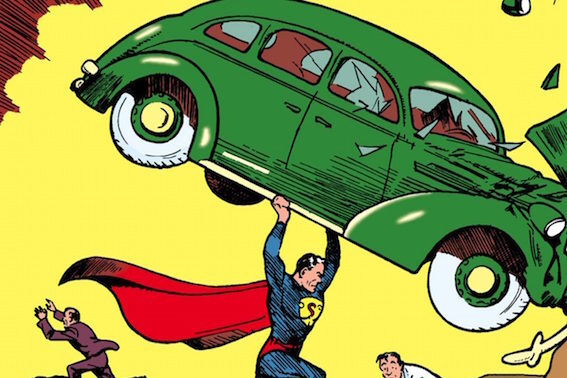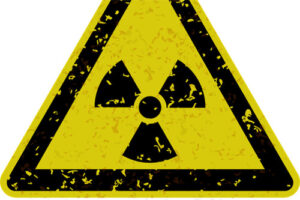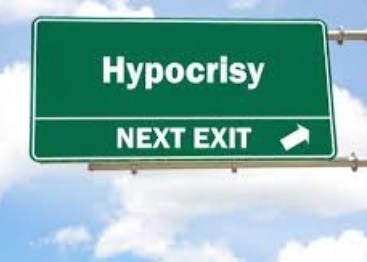10 Startling Statistics That Reveal the Truth About Death
Death is rarely a topic people approach with joy or humor. It’s grim, inevitable, and often uncomfortable to discuss. But some death-related statistics are so dark, bizarre, or downright unbelievable that they cross over into the realm of fascinating.
From baffling causes of death to outdated laws that defy logic, we’ve uncovered a list of chilling facts and stories that highlight just how strange and unsettling the world of death statistics can be. Brace yourself — it gets weird.
10. US Soldiers Are Shockingly More Likely to Die by Suicide Than in Combat

When you think about being a soldier, the first images that probably come to mind are battlefields, bulletproof vests, and the ever-present risk of dying in combat. It’s one of the few professions where risking your life is part of the job description. But here’s a statistic that flips that idea on its head—and not in a way anyone would expect.
According to a detailed report released in 2021, since the 9/11 attacks in 2001, more than 30,000 U.S. military personnel and veterans who served in the post-9/11 era have died by suicide. Compare that to the roughly 7,000 soldiers who died in actual combat during the same period. That’s over four times more deaths by their own hand than by enemy fire.
Let that sink in.
The idea that being on the battlefield is not the deadliest part of military service is both heartbreaking and baffling. The psychological burden soldiers carry—PTSD, survivor’s guilt, depression, and more—often goes unseen and untreated. And while the public sees images of war zones and explosions, what’s rarely discussed is the quiet war many veterans fight alone, long after the shooting stops.
This isn’t just a military issue; it’s a human one. And what makes it even more unbelievable is that, prior to this modern era, suicide rates among military personnel were actually lower than those in the general population. That trend has now reversed, creating a silent crisis among those who have already risked everything.
It’s stories like this—ones that seem almost too shocking to be real—that highlight the kind of hidden truths our world holds. Behind uniforms and medals, there are real people struggling, and their battles don’t always end when the war does.
9. The Shocking Truth: Americans Are Three Times as Likely to Die in Car Crashes Than the French
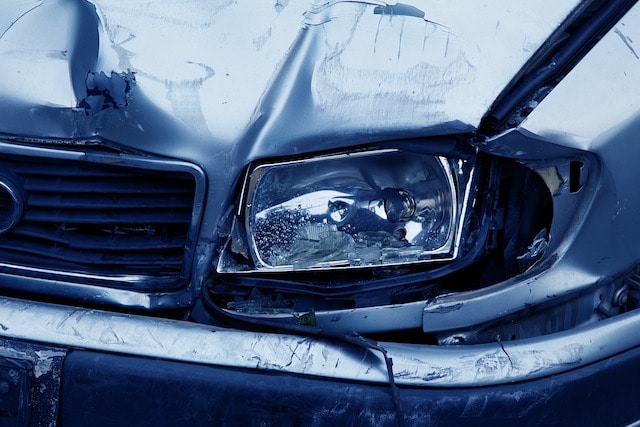
Hey there! When it comes to statistics, sometimes they just seem like a bunch of numbers floating in a void, hard to truly wrap your head around. Let me give you an example. Imagine if we said 100 Americans die from rabbit attacks every year. Is that because rabbits are super – dangerous, or is it just a rare but still possible event that makes the stat seem alarming? Comparing such numbers with other countries can shed light on what these figures really mean.
That’s exactly what we’re going to do with car crash fatalities. In 2021, a staggering 42,915 people in America lost their lives in traffic accidents. This was reportedly the highest number of traffic deaths in 16 years. But here’s the big question: Was this just an American problem, or did Covid – 19 have a hand in it, leading to more accidents globally?
Let’s take a trip back in time. Back in the 1970s, France and the US had eerily similar traffic death statistics. Around 225 citizens per million in both countries were dying in car crashes. During the 1990s, both nations made progress. Through the implementation of various safety measures, like better seat – belts, improved road designs, and enhanced vehicle safety features, the fatality rates in both countries declined by approximately 31%.
However, after the 1990s, a strange thing happened. In France, the number of traffic deaths continued to decrease steadily. But in the US, it was like hitting a brick wall and then going in the opposite direction. The US became the only country in the G7 nations where this upward trend in traffic fatalities occurred, while all the others maintained a downward path.
Fast – forward to 2021, and the contrast is shocking. Americans are three times as likely to die in a traffic accident as the French. Moreover, the French are 40% less likely to die per mile driven than Americans. This means that for every mile you drive in the US, you’re at a much higher risk of a fatal accident compared to your French counterpart.
This disparity might seem unbelievable at first, but when you dig deeper into factors like road infrastructure, driving habits, and vehicle safety regulations, you start to see where the differences lie. It’s a real eye – opener and shows how different countries can have vastly different outcomes when it comes to something as common as driving.
8. A Suicide Attempt Could Raise Your Risk of Deadly Heart Disease by Age 40—By Seven Times
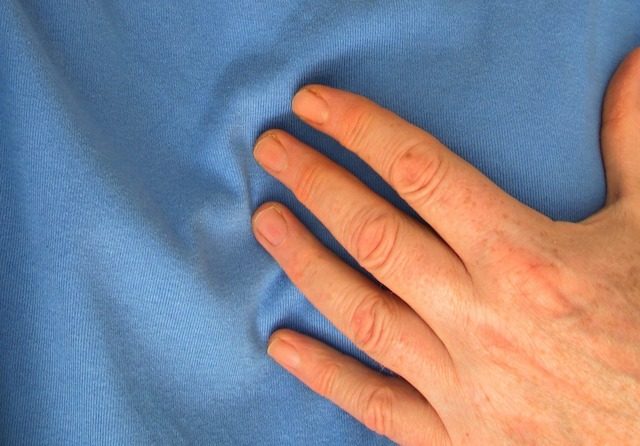
Mental health has rightfully become a more open and discussed topic in recent years. We’re finally starting to pull back the curtain on what was once hidden in shame: depression, anxiety, suicidal thoughts, and the long-term consequences that often follow in their shadow. But some of those consequences are far more physical than most people imagine.
In a startling discovery, researchers have found that people who attempt suicide are seven times more likely to die from ischemic heart disease before they turn 40. That means someone who survives a suicide attempt could face an unseen ticking clock—a drastically heightened risk of dying young from a heart condition that’s usually associated with older age.
This isn’t just about emotional pain. It’s about how that pain physically reshapes the body. The connection between depression and chronic heart disease has been studied for years, but new research dives deeper. It reveals that young individuals who live with depression are already at four times the risk of developing heart problems. Add in a suicide attempt, and the risk nearly doubles again.
What makes this so incredible—and heartbreaking—is how mental and physical health are inextricably linked, often in ways we’re only beginning to understand. A mind in turmoil can quite literally break the heart.
7. Funny People Seem to Die Younger: Is Humor a Double – Edged Sword?

Imagine this: You’re the life of the party, the one cracking jokes that leave everyone in stitches. But here’s a bit of a downer – statistically, being a funny person might not be as great as it seems. Yeah, you heard that right. Funny people seem to die younger than their more serious peers. And get this, the funnier you are, the greater the chance you’ll kick the bucket earlier. Now that’s a punchline no one wants to hear!
When we zoom in on the world of showbiz, research has uncovered some pretty interesting (and kinda sad) stuff. Comedians, those masters of making us laugh till our sides hurt, tend to have a shorter lifespan compared to their dramatic actor counterparts. The funnier a comedian is thought to be, the sooner they seem to shuffle off this mortal coil.
Take comedy duos, for example. You know, the classic setup with a funny guy and a straight – faced sidekick. More often than not, it’s the funny guy who bites the dust first. And the numbers are no joke. The funniest comedians have an average age of death at 63.3 years. Meanwhile, their less – funny counterparts manage to stick around for almost another decade. That’s a pretty big gap, wouldn’t you say?
Now, while the researchers haven’t made any hard – and – fast conclusions, they did notice something interesting. A lot of comedians have reported struggling with mental health issues like depression and/or mania. It makes you wonder – is the pressure to constantly be funny taking a toll on their well – being?
6. Economic Depressions May Actually Help People Live Longer—Seriously

When the economy crashes, our first thoughts are rarely positive. Layoffs, shrinking bank accounts, rising stress—none of it feels like good news. But in one of the most surprising and counterintuitive twists from the world of research, economic depressions may actually reduce overall mortality rates. Yes, fewer people die when the economy tanks.
This isn’t just a theory—it’s backed by multiple studies. During downturns, there tends to be less traffic on the roads, which means fewer car accidents and related fatalities. Air pollution levels also dip thanks to reduced industrial activity and commuting, which can lead to a drop in respiratory illnesses and cardiovascular deaths. Want to breathe easier? A recession might do that—literally.
There’s more. When jobs become scarce and money gets tight, people often cut back on harmful habits like drinking, smoking, and fast food. Many end up cooking more meals at home, often with healthier ingredients, and walking more instead of driving. That unexpected shift can improve diet and exercise patterns across entire populations.
And while not going to work might sound like a nightmare for your wallet, it also means fewer workplace injuries—a factor that absolutely plays into national health statistics.
Of course, this isn’t to say depressions are “good” in any holistic sense. Mental health struggles, stress-related conditions, and substance abuse can still rise among certain groups. But when researchers zoom out and look at the overall data, they’ve found something truly incredible: more people survive a recession than would in normal economic times.
5. Beware of Black Wednesday: A Risky Time to Be in the Hospital

Hey there! Let me tell you about a rather eerie phenomenon that’s been the talk in the UK – Black Wednesday. This isn’t some spooky holiday; it’s the first Wednesday in August. On this day, new doctors are finally given the green light to work independently in hospitals. And here’s the kicker – there’s long been a rumor floating around that this is the deadliest day to be a patient. The main suspicion? Well, it’s all about those fresh – faced, inexperienced doctors. People worry that they might make a whole bunch of rookie mistakes, putting patients’ lives at risk.
But is there any truth to this scary rumor? Well, researchers decided to put it to the test. They delved into patient mortality statistics, and guess what? The results were startling. It turns out that the theory holds water. A patient is actually 6% more likely to die on Black Wednesday compared to other days. That might not sound like a huge number at first glance, but when you’re the one on the hospital bed, every percentage point matters.
There’s a bit of a debate about what these numbers really mean. Not all hospitals have been able to replicate these findings. Some experts argue that there could be other factors at play. For instance, during the summer months, more doctors tend to go on vacation. This means there might be less access to experienced medical care overall, which could contribute to the higher mortality rate on Black Wednesday.
Let’s break down the numbers a bit further. The 6% increase in the likelihood of death translates to approximately 13 more deaths on this fateful day. While it’s not an extreme number, it’s still not exactly great news for patients.
It’s important to note that there are numerous factors that can influence patient outcomes in a hospital. Every hospital is different, and not every single one follows this pattern. However, if you’re someone who’s worried about the risks, here’s a tip: try to avoid being admitted to the hospital during the summer months, especially around Black Wednesday.
4. You’re 14% More Likely to Die on Your Birthday—And No One Knows Why

Birthdays are meant to be celebrations—balloons, cake, laughter, maybe a few questionable decisions. But here’s a bizarre twist you probably weren’t expecting: statistically speaking, you’re more likely to die on your birthday than any other day of the year. Not by a little, either. According to researchers in Switzerland, the risk jumps by 14%.
This wasn’t some clickbait headline spun out of thin air. The study examined an astonishing 2.5 million death records between 1969 and 2008. That’s not a blip on the radar—it’s a serious data deep dive. And the conclusion? The day you blow out your candles may also be the day you kick the bucket.
You might assume it’s because people tend to party harder, drink more, or take more risks on their birthday. That would make sense. But interestingly, the data doesn’t back that up—accidental deaths and risky behavior don’t account for the spike. Nor is there evidence that people hang on to life just to reach one more birthday milestone; if that were true, we’d see fewer deaths leading up to birthdays. We don’t.
One theory is far less thrilling but oddly compelling: human error. A UK statistician suggested that clerical mistakes could be inflating the numbers. Think about it—if someone filling out a death certificate doesn’t know the exact date of birth, they might just copy the date of death into both fields. Even if this happened in just 0.04% of cases, it could be enough to skew the results.
3. Could Neurosurgeons Face a Higher Risk of Alzheimer’s? Unraveling the Germ Theory

Alzheimer’s disease is a truly devastating condition. In 2019 alone, it claimed the lives of 121,499 people in the United States. What’s even more alarming is that over six million Americans aged 65 and above have been diagnosed with this illness. For years, scientists have been tirelessly researching Alzheimer’s, pouring countless hours, resources, and funds into the quest to combat it. Yet, despite all this effort, the root cause of Alzheimer’s remains shrouded in mystery.
Now, let’s dive into a rather under – explored theory: the germ theory of Alzheimer’s. This theory posits that certain bacteria, parasites, or proteins might be the culprits behind this debilitating disease. While it hasn’t received a lot of mainstream attention, there is some research that lends it a degree of credibility.
Here’s where things get really interesting. Studies suggest that neurosurgeons who operate on Alzheimer’s patients may be at a significantly higher risk of developing the disease themselves. One piece of research indicates that they are two and a half times more likely to contract Alzheimer’s than the average person. Even more shockingly, an earlier report claimed that the risk could be as high as six times the normal rate.
The idea of an “Alzheimer’s germ” has popped up a few times in the past, but it never really caught on or garnered widespread interest. As a result, very little research has been dedicated to exploring this hypothesis.
2. Pro Wrestlers Face a Shocking Mortality Rate—Worse Than Any Other Athletes

It may look like glamour, drama, and body slams, but behind the bright lights of the wrestling ring lies a grim reality: pro wrestlers die younger—and more often—than any other athletes. If you’ve followed wrestling beyond the scripted rivalries and high-flying stunts, this might not come as a shock. Still, the numbers are chilling.
Statistically speaking, a professional wrestler is 15 times more likely to die from cardiovascular disease than the average man. The risk of cancer? Multiply it by 6.4. But the most alarming stat? Wrestlers are a jaw-dropping 122.7 times more likely to die from a drug overdose.
Yes, 122.7 times.
Why the massive disparity? The answer isn’t just in the physical toll of wrestling—though that certainly plays a role. It’s the non-stop grind, the painkiller use, the lack of off-seasons, and the pressure to maintain extreme physiques well into middle age. The illusion of invincibility on TV masks a deeply human vulnerability behind the scenes.
In a study of wrestling deaths reported in 2014, researchers found that 16% of wrestlers had died by age 40 to 45. That number climbed to 20% before age 50. By comparison, even in the notoriously tough world of NFL football, only about 6% of players had died by the time they reached 55–60.
Some of the most well-known losses—names like Eddie Guerrero, Chris Benoit, and Test (Andrew Martin)—serve as grim reminders of how real the dangers are in an industry often dismissed as “just entertainment.”
1. Surgery on Your Doctor’s Birthday? You Might Want to Reschedule

Here’s something that feels like it came straight out of a strange medical drama: your chances of dying after surgery may go up if it’s your surgeon’s birthday. Sounds absurd, right? But the numbers tell a different—and pretty unsettling—story.
A large-scale study analyzing data from nearly one million surgical procedures revealed something unbelievable yet statistically significant. If you’re an elderly patient, your risk of death within 30 days of surgery jumps by 23% if your operation falls on your surgeon’s birthday.
Yes, 23% higher mortality, just because of a birthday.
Researchers suspect the reason lies in something both simple and deeply human: distraction. Surgeons are, after all, people too. A birthday might mean they’re thinking about evening celebrations, family calls, or just not as mentally “locked in” as usual. It’s similar to the rise in mortality rates on major holidays or during high-distraction events like national sports championships.
This pattern has sparked conversations in the medical world about scheduling discipline, surgeon workload, and even hospital protocols during personal milestone days.

